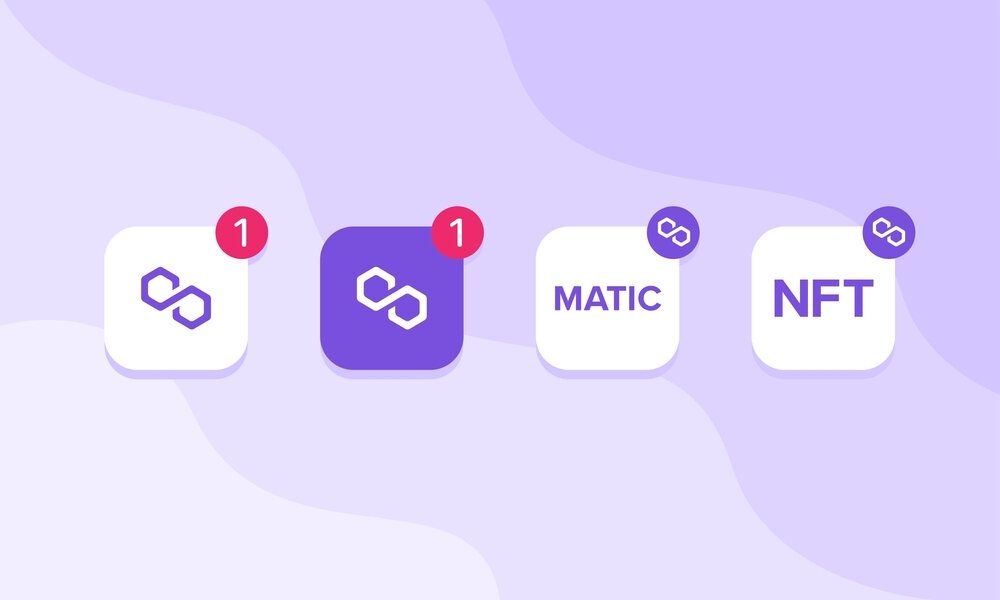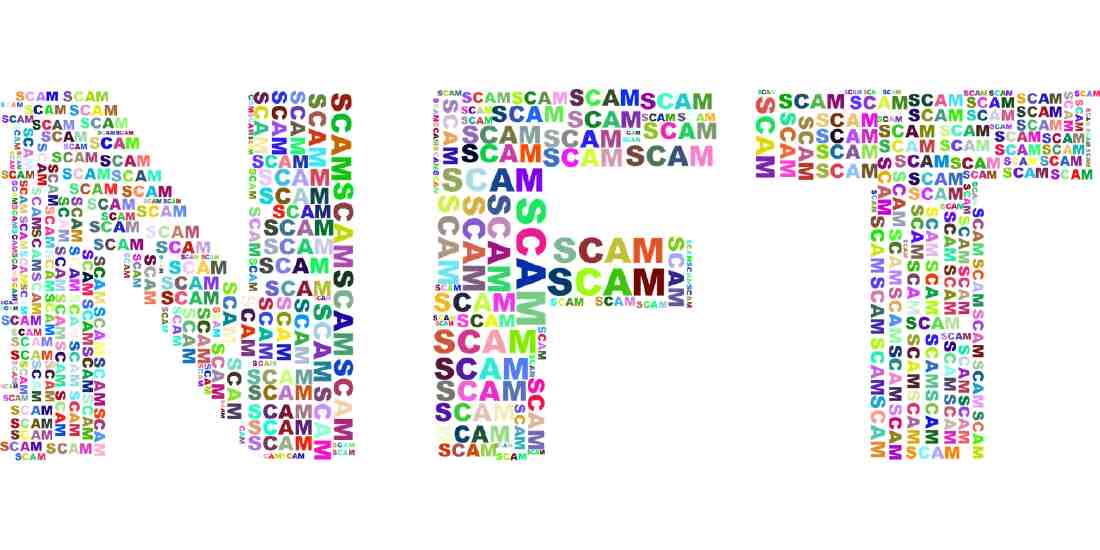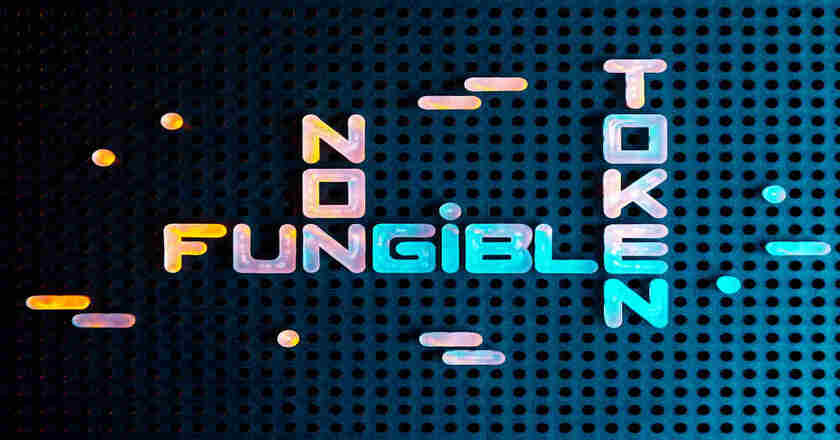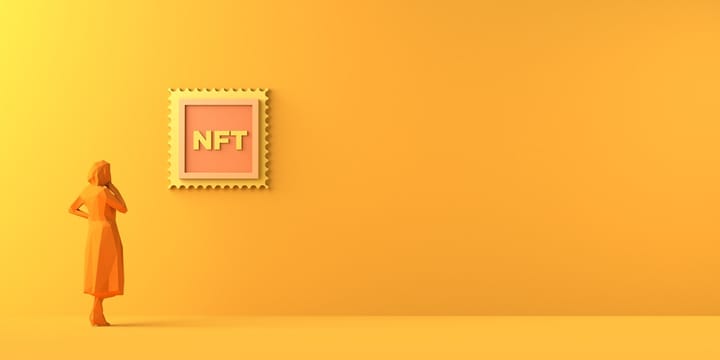Polygon NFT Marketplace: A Comprehensive Guide
Unless you've been living under a rock, you most likely know that the cryptocurrency market has taken the world by storm and skyrocketed in popularity and usability. The polygon NFT marketplace is one of the new trading ways to help avoid fraudulent practices and losses for participants.

What is Matic NFT Marketplace?
The Ethereum blockchain network is the most popular in the crypto world, which is why every new token aspires to be a part of it. The network's trustworthiness and legacy are its reliability and network stability. Nonetheless, Ethereum's scalability is a significant concern. As a solution, Ethereum introduced its layer two protocol, Polygon NFT, which is like but not the same as the blockchain. It is referred to as a side chain by experts.
Polygon Matic NFT marketplace was established in 2017 under Matic NFT Marketplace. Network by developers Sandeep Nailwal, Jainti Kanani, Anurag Arjun, and Mikhailo Beli. Matic Network's creators renamed the project Polygon in February 2021. They presented a revised project development strategy, stating that the L2 solution would evolve progressively into a multi-chain system.
The original name for Polygon was Matic; Matic NFT aims to connect and develop Ethereum-compatible blockchain networks. Matic aims to build an ecosystem in which users can take advantage of the various features provided by the Ethereum platform.
People Have More NFTs on Polygon
Since July 2021, users have been able to trade Matic NFTs on OpenSea via the Polygon network, and the option has grown in popularity. Polygon marketplace is an Ethereum Virtual Machine compatible sidechain to Ethereum, and users can save on Ethereum gas fees and experience faster transactions by using OpenSea on Polygon.
In a tweet, polygon analyst Simran Gogia statedthat trading volumes on OpenSea via Polygon reached $78.9 million in January, with over 102,000 trades per day. According to Gogia, users saved $195.6 per month using Polygon instead of the Ethereum base chain, averaging $0.04 per transaction.
Trading volume on the Polygon Matic NFT marketplace exceeded $79 million in January of this year, up nearly 4% from December and 465% since July 2021.
The disadvantage of trading NFT over the Polygon network is a lack of liquidity – Ethereum Layer-1 has many more potential buyers. According to Dune Analytics data, nearly $5 billion in NFT trades occurred on the Ethereum base chain in January alone.
However, in January, slightly more NFTs sold on Polygon than on Ethereum – 2.6 million versus 2.4 million, respectively. It reflects users' willingness to trade more if they don't have to spend as much money on gas fees.
Why do Users Prefer NFT Marketplace Polygon?
Polygon is a secure second-level solution (L2) network with autonomous sidechains. Its purpose is to expand Ether's adaptability while lowering transaction costs.
Polygon architecture serves several purposes. It enables other apps to select the appropriate scaling option for their needs. For example, an NFT marketplace aiming to cut transaction costs but prepared to compromise security may select Security Layer with its set of sharing validators. The blockchain network is also appealing because of its lower transaction costs and faster transaction processing speed than Ethereum.
Polygon was declared one of the Top Twenty of CoinMarketCap in May 2021, with a market value of around $13 billion, and Bitwise Asset Management created a fund based on this token in October.
Aside from the ease of use, there are several advantages to establishing a NFT marketplace Polygon. Let us look at three of them:
- Increased reach: It enhances the chance for creators; creating your Polygon NFTs in a cross-chain marketplace expands your reach and, as a result, your chances of selling. For collectors, buying NFTs on a Matic NFT marketplace supporting multiple blockchains increases your chances of meeting other collectors interested in purchasing your NFT. Furthermore, as surprising as it may sound, all NFTs created on the Polygon network will appear autoMatically on the OpenSea polygon dashboard for greater reach!
- Speed and Affordability: Polygon quickly became a popular alternative to Ethereum due to its affordability and speed. It is 1000 times cheaper than Ethereum. You get Ethereum benefits without paying gas fees.
- Get MATIC: Just as BSC-based users earn BNB, every NFT collector on the Polygon network earns MATIC (Polygon's utility token).
The growth of NFT is a fascinating story of how it began as pixelated punk and progressed to its Metaverse. It may now operate on any object and run on any platform. As time and technology progress, NFTs become more polymorphic. Polygon NFT market is one of the compelling legends.
Polygon Studios, a branch focusing on blockchain games and the NFT ecosystem, was launched in July 2021. It will promote certain goods and assist developers working in these areas. The division intends to attract significant companies, well-known content producers, and investors interested in working in the right direction.
NFT and Gas Fees
Users must pay a commission when listing NFTs for sale on NFT markets (gas fees or gas price). This charge changes depending on the time of day. It also heavily relies on how the Ethereum network is designed, on-demand on the network, the current value of Ether, and how long and how quickly you want to execute a contract. Understanding these processes is critical for NFT developers as well as collectors. The fee can sometimes surpass the generated work of art price: to enter the NFT Marketplace Polygon and afterward sell their first NFT gif, users may spend $ 70-100.

When gas prices rise, many (particularly inexperienced) artists become unprofitable to manufacture, mint, or purchase someone else's NFT. There is, however, an alternative: some artists include gas into their creations, making them more inexpensive and moving the commission cost to the customer.
Why May You Select Polygon NFT Marketplace?
Because anybody can quickly produce, sell, and mint these digital objects, there is a vast engaging frenzy in generating NFTs among children's mental perceptions.
- The polygon network gives the optimum user experience while avoiding the challenges of connecting a decentralized network.
- It differentiates itself from existing blockchain technologies in scalability, adaptability, and compatibility.
- In general, it reaps the full benefits of Ethereum network effects.
- The Polygon NFT Marketplace has launched with a cheaper gas charge than the classic blockchain network without any security loss.
- It also delivers faster transaction speed, resulting in a significantly cheaper transaction charge.
Solutions for Second-Level Scaling
Ethereum's bandwidth is around 30 transactions per second (Transaction per second, TPS). Network users are actively using DeFi protocols and trading NFT simultaneously. At the time of writing, there were 190,000 unconfirmed transactions in Ethereum.
Users deploy second-level solutions (Layer 2, L2) on top of the blockchain to increase Ethereum's throughput, which process transactions outside the leading network. They are classified into two types:
- Status channels are solutions that enable transactions to take place outside of the leading network (off-chain). The latter serves as a "judge," finalizing transactions by incorporating them into blocks. Status channels include the Lightning Network in Bitcoin and Litecoin and the Raiden Network in Ethereum.
- Sidechains are independent networks that are linked to "parent" blockchain systems. Users can conduct sidechain transactions with tokens and cryptocurrencies and, if required, restore them to the original network. Liquid Network in Bitcoin and OMG Network in Ether are two examples of such systems.
How Can You Create a Polygon Matic NFT Marketplace?
Because of the tremendous surge in NFTs, crypto markets proliferated. Polygon played an active role in creating the Matic NFT marketplace due to its reputation as a blockchain network confirmed by Ethereum. After introducing the Matic NFT marketplace, let's go through how to use it. The platform helps organizations differentiate by delivering security and dependability. It will allow them to launch their own NFT markets quickly. Users can also tailor the result to their specific requirements.
Users can purchase, trade, and display digital assets on typical NFT markets. Users may buy assets at a preset price or bid in an auction on this platform. A Polygon NFT Marketplace operates in a similar setting but on a safe technology with simple access and multi-chain interoperability.
So, if you want to create an NFT marketplace development on Polygon, you'll need a Node.js app and a framework. If you are not a coding specialist, several NFT software solutions provide skilled developers and specialized assistance from a highly motivated workforce.
It enables an NFT enthusiast, newcomer, or current NFT firm to use developers to construct a platform for real-world applications. Although it is a time-consuming project that requires significant effort from both the developer and the user, Polygon blockchain is a simple method to get started with an NFT Marketplace.
Despite how complicated the technique appears; it is not a hard rock to drill. Before you worry about cracking it all, consider the perks that may motivate you to take the next step.
The Advantages of Creating an NFT Marketplace on Polygon Matic
- High transaction speed- One of the primary benefits is that it allows the consumer to experience a smooth and rapid payment transaction.
- Cost-effective- Another significant advantage is that the transaction price is significantly lower when compared to other blockchain networks. Compared to other platforms, the gas fees for NFT transactions are low.
- Advanced security- It makes the platform more secure by using its algorithm. Each transaction on the platform is encrypted to the highest degree.
- Highly scalable- This platform can easily sustain many transactions because it uses a Sidechain approach. The NFT marketplace uses the Ethereum blockchain and enhances its functioning by aiding it. The platform allows quick and painless transactions.
- Interoperability- This platform enables users to trade with NFTs from different Sidechains.
- User-interface: As the owner of an NFT marketplace platform, you can deliver the most excellent UX possible. Once the Polygon NFT platform is finished, you will have an excellent product.
- Two solutions are layered: With tremendous scalability, you may significantly accelerate everyday transactions.
- Decentralized architecture: It has complete transparency for Matic NFT marketplace users.
- Ethereum compatibility: Allows Ethereum-compatible blockchains to communicate and reduces constraints to leverage Ethereum's ecosystem fully.
- Sovereignty: Integrates with the Ethereum network to provide sovereign blockchains with multi-chain capabilities, allowing thousands of transactions per second.
- Modularity: Take advantage of an expandable, configurable, and updated platform. Reduce system downtime by permitting several layers of setup. Matic allows polygon chains to interface with other blockchain networks.
Wouldn't that be the ideal NFT marketplace development platform if it included a robust, decentralized, highly secure layer two solution user interface? Other advantages of developing a Polygon-based NFT marketplace include increased efficiency, total transparency, rapid throughput, and many more.
The Top 10 Polygon NFT Marketplaces
If you are searching for the best Polygon NFT marketplace, the following list of the top Polygon NFT marketplaces is for you:
- OpenSea
- Refinable
- NFTrade
- tofuNFT
- Treasureland
- NFTically
- Venly Market
- Zesty Market
- PlayDapp Marketplace
- LootEX
Polygon Marketplace have a low total transaction volume. It is partly due to the perception of Ethereum NFTs as "luxury" products, but it is also because most people are unfamiliar with layer two blockchains such as Polygon.
Given the amount of money that may be at stake, most people will cling to what is comfortable and safe for them.
Why Develop a Polygon NFT Marketplace?
So far, Ethereum is thought to be the most delicate blockchain network for developing a non-fungible token. As a result, multiple NFT projects have accumulated on the Ethereum network, resulting in significant performance latency. Another well-known disadvantage of Ethereum is the hefty transaction cost. Because of these factors, the Polygon network is an excellent place to develop your own NFT Marketplace. Its Layer 2 network operates as an add-on layer to the Ethereum network, increasing efficiency, scalability, and security while also lowering total transaction fees.
Polygon NFT Marketplace Development
Polygon NFT Marketplace Development is the technical process of building a fully functional NFT Marketplace on a polygon network. The process would go through several stages, from inspiration through smart contract deployment, MVP development, token production, and Testnet publication. The newly developed NFT Marketplace would have all of the NFT capabilities and the ability for users to purchase and trade NFTs.
The following items must be covered during the whole Polygon NFT Marketplace Development process:
- Ideation
- Requirements Evaluation
- Development of a road map
- Prototyping and MVP
- Deployment of Smart Contracts
- Creating Native Tokens
- Development of the Front End
- Testnet Marketplace Execution
- Quality Analysis / Bug Testing
- Distribution of beta versions
- Support and upkeep
Different forms of Polygon NFT Marketplace Development
There are several advantages to developing an NFT Marketplace on the Polygon network; some are mentioned below.
1. NFT Marketplace Game Development
It is healthy knowledge that online games are one of the most effective applications of NFT. As a result, Polygon provides an NFT Marketplace with several distinct features for gamers. You may trade various game equipment such as avatars and guns by using the NFT marketplace based on the Polygon network.
2. Fashion NFT Marketplace Development
NFT development services providers understand the concept of the NFT Marketplace on Polygon and can create a user-friendly platform for their users. So, you may independently present your unique creations and enjoy limitless trade.
3. NFT Real Estate Marketplace Development
Platforms are offering NFT Marketplace Development on Polygon because of the popularity and relevance of NFTs in the real estate business. Their users may sell and buy assets such as virtual land and homes in the form of NFTs through the Marketplace built on Polygon. As the demand for NFTs in real estate grows, the value of the assets listed on the platform will gradually generate high revenues.
4. NFT Digital Arts Marketplace Development
Polygon recognizes the struggles of digital content creators and makes it simple by providing an NFT marketplace where anybody can promote their unique piece of art. With Polygon on board, you can launch a Polygon NFT Marketplace where you can easily exchange unique arts and crypto collectibles.
Price Chart with Polygon
Polygon Matic's all-time price history is shown here, demonstrating how its value increased from a modest start in 2019-to 2020. Polygon's price increased because of the NFT bull run through 2021.
Polygon hasn't grown as quickly as other coins like Dogecoin, with its price skyrocketing, but it has had a steady rise that took time to reach the US$1 level.
Polygon's price reached an all-time high of US$2.92 on December 27, 2021, but it soon lost value by the end of January 2022, resulting in an almost 50% market value loss.
However, according to Wallet Investor's price projection for February 2, 2022, Polygon's value will continue to rise, perhaps reaching US$10.38 by the end of January 2027.
Wrapping Note
It is the guide to everything you need to know about the Polygon NFT Marketplace, which houses a wide variety of gaming-related goods on a marketplace. This article has covered all aspects of this Marketplace and its features. Polygon blockchain is the most widely used platform for selling non-fungible tokens on the NFT marketplace. Its characteristics and benefits make it an appropriate and long-term foundation for creating a marketplace. If you're a company looking for a chance to Polygon NFT Marketplace solutions, you're only a few steps away from building a user base and reaching new heights in the digital world, as many platforms did the same to assist other businesses like yours.



